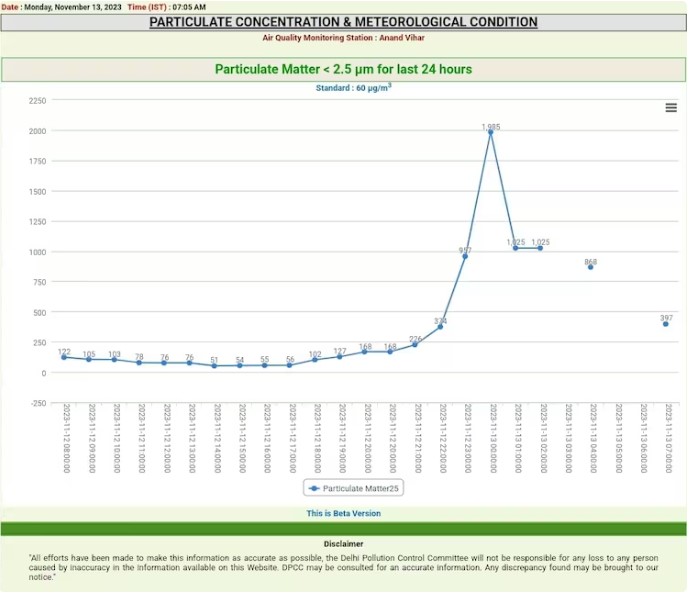The firecracker frenzy on Diwali undermines the rainy season, making the air in Delhi hazardous once more.

Delhi and its neighboring areas woke up to hazardous air quality on Monday morning following Diwali celebrations, as residents defied a ban on firecrackers. Despite initially recording its best air quality in eight years on Diwali day, with an average Air Quality Index (AQI) of 218, the situation deteriorated later in the evening due to widespread firecracker use.
In several parts of the city, thick smog enveloped the surroundings, causing visibility to plummet to a few hundred meters. The AQI levels in certain areas surged to alarming levels, breaching 900 on Monday morning. Notably, the India Gate area recorded an off-the-charts AQI level of 999, and the Major Dhyan Chand National Stadium area experienced a similar spike.
The Delhi Pollution Control Board (DPCC) reported a sharp increase in pollution levels post-firecracker bursting, with PM2.5 concentration soaring from 56 ppm at 5 pm on Sunday to nearly 2000 ppm at midnight in Anand Vihar.
Delhi Environment Minister Gopal Rai attributed the rise in pollution to targeted firecracker usage, expressing concern about the influence of certain political leaders inciting such activities. Rai announced a review meeting with Environment Department officials to address the escalating pollution levels.
Despite experiencing improved air quality following incessant rains on Friday, the pollution situation took a turn for the worse after Diwali. The city’s air quality, categorized between ‘very poor’ and ‘severe’ since late October, witnessed a brief respite with clear skies over the weekend.
Comparing this year’s AQI with previous Diwalis, the capital had seen a decline in air quality, recording 312 in 2022, 382 in 2021, 414 in 2020, 337 in 2019, 281 in 2018, 319 in 2017, and 431 in 2016, according to data from the Central Pollution Control Board (CPCB).
The AQI scale ranges from ‘good’ (0-50) to ‘severe plus’ (above 450). Delhi’s struggle with deteriorating air quality persists, emphasizing the ongoing challenge of curbing pollution despite occasional improvements.







